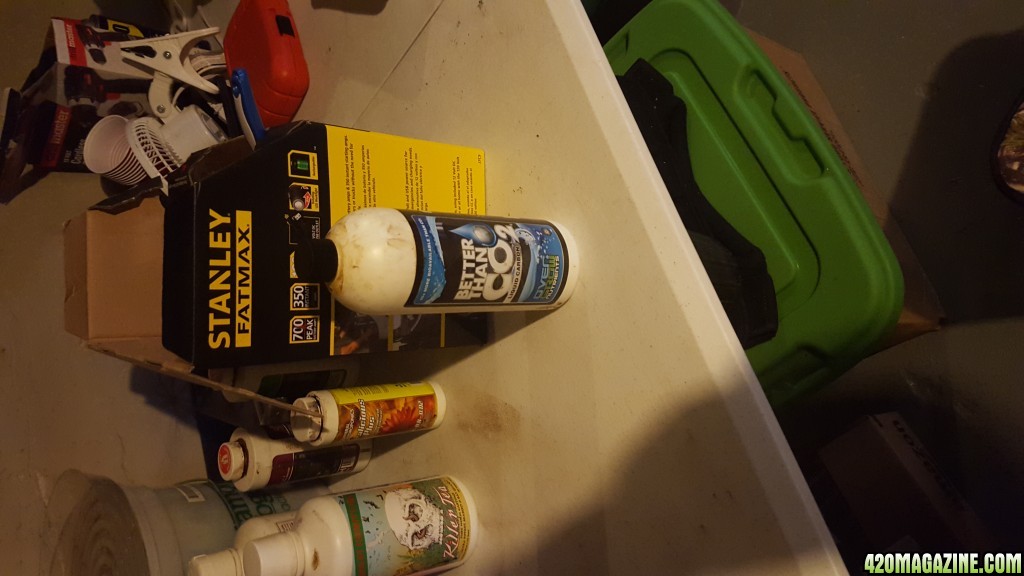Navigation
Install the app
How to install the app on iOS
How To Use Progressive Web App aka PWA On 420 Magazine Forum
Note: This feature may not be available in some browsers.
More options
You are using an out of date browser. It may not display this or other websites correctly.
You should upgrade or use an alternative browser.
You should upgrade or use an alternative browser.
CO2 on the roots part 1
- Thread starter SpeesCees
- Start date
uptheholler2
New Member
Or you can get the exact same results just by adding an occasional bottle of club soda to your watering routine. It's a cure I often use for ailing plants especially when they have a root development problem. Let's see.......1.00 for a 2 liter bottle. Best of luck in all you grow!
Treated Highly
New Member
You really nailed this thank you.I'm no agronomist but some things in this paper come into question:
1) Carbonic acid is nothing more than CO2 dissolved in water - soda water/seltzer. Every grower should take note that it really is an ACID. Adding additional acid via soda water can cause problems for the inexperienced, and it has the potential to cause shifting nutrient lockouts as the root-zone pH fluctuates.
2) The paper makes a claim of applying basic (pH 9) "carbonate" to the beets but no mention of carbonic acid directly - THEY DID NOT APPLY SELTZER. They claim to use ammonium carbonate (NH4)2CO3) but they report CO2 equivalents, which is a stretch. Ammonium carbonate is water soluble but it also decomposes in air to give ammonia and ammonium bicarbonate (NH4HCO3), another basic salt. Well, this ammonium bicarbonate decomposes under acidic conditions (your rootzone) to give ammonia, water and CO2 --- NH4HCO3 → NH3 + H2O + CO2 So far that's 2 molecules of nasty ammonia for each CO2 gained. Strong basicity influence on the soil chemistry.
All of the extraneous salts and ammonia byproducts have the potential to wreak havoc on a garden by affecting the pH, affecting uptake of other nutrients. The soil already contains all sorts of ions for the NH3 to hook up with and form more toxic salts. It's a big risk to take considering how easy CO2 injection is, and the fact that we can monitor dosing accurately and maximize CO2 uptake through the leaves.
3) Because a claim was made in 1954 about sugar beets, which is quite possibly true, this does not mean that other species will respond accordingly. Slow down and consider that different species have different needs and responses. Likewise, success of an outdoor crop with native soil and ammonium carbonate is no indicator that a container plant will do well with seltzer water... apples and oranges.
4) Experimentation is always good. Hightimes has reported on the idea of watering with this CO2-acid water (seltzer) and it never seemed to gain popularity. The chemistry behind it would be different: You add seltzer (acid water) and plummet the pH to around 5 and lock out/reduce absorption of key nutrients. As it sits waiting to be absorbed the CO2 starts to evaporate and with that, the pH starts coming back up slowly. Meanwhile, CO2 gas is percolating through the soil, but the roots need oxygen gas, which is being displaced.
5) It's foggy but I recall that cannabis root chemistry alternates on a day/night cycle in which oxygen is needed by the roots during daylight hours, and that there is some trace CO2 involvement at night... anyone?
6) Paper states that weight loss occurred for vegatative growth but that the root yield was boosted. Sugarbeets are a root crop, not a flower crop, so again, the study is not applicable to a flower crop.
Yours In Pain,
biscanna
Similar threads
- Replies
- 30
- Views
- 5K



